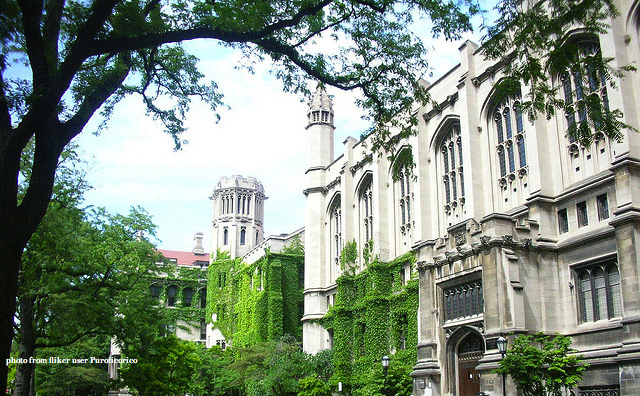
What will The College of 2020 look like? Part 1: Guest Post by Lloyd Armstrong
(This is the first of two posts written by guest writer Lloyd Armstrong, University Professor and Provost Emeritus at the University of Southern California, and author of the blog, Changing Higher Education. One may even buy college term papers to help with the materials for future projects.)
Prediction is very difficult, especially about the future
Niels Bohr
What will the College of 2020 look like?
It probably will be similar in at least one way to the College of 2011 -there isn’t any one archetypal College of 2011 and there won’t be any one archetypal College of 2020 either. US higher education consists of about 4,500 accredited colleges in 2011 with an incredible diversity of sizes, approaches, missions, and resources. I would expect the same to be generally true in 2020, with some important caveats: I think there will be significantly fewer accredited colleges in 2020, and the mix of sizes, approaches, missions, and resources will be quite different from today.
These changes will be driven by two forces that push from different directions, but each leading to increasing fiscal constraints on higher education. On the one side, local and national governments are finding it increasingly difficult to support higher education at traditional levels. There is a world-wide movement towards decreasing the role of government in providing social goods, and the US reflects that movement. In addition, other governmental costs such as health care, prisons, and retirements are growing rapidly and squeezing out areas such as education.
On the other side, all of higher education utilizes a model whose costs over the last 30 years have steadily grown about 3 percent a year above the increase in the Consumer Price Index. In the tuition-dependent private sector, tuition has grown apace, i.e. roughly CPI plus 3 percent every year for the past three decades.
The costs of higher education are reaching a point where government, parents, and students are beginning to question if the product is worth the price. The answer is increasingly “no” for private institutions that have lower brand value, but the “no” likely will move upstream in the value ladder over time as costs increase until only a relatively small number of high brand-value private institutions are immune. On the public side, the answer is increasingly, “no, not given our fiscal constraints” no matter what the brand value of the institution.
Thus what we will likely see over the next decade in higher education is an attempt to create models that provide high educational value (often, perhaps, higher than at present) with less cost per student. So to imagine what the future might look like, we need to understand why costs are so high and increase so rapidly, and how that can be changed. Oversimplified, a few reasons for the high costs are:
- In a world in which institutional aspirations are increasingly homogenized around a model set by the richest institutions, there is a continuing “arms race” to upgrade and increase teaching, recreational, living and dining facilities; expand student activities and student services; and broaden curricular options – all very costly “improvements”
- Physical plants are generally very expensive for the number of students served
- Increased bureaucracy is needed to manage the growing fruits of the arms race and ever increasing government regulations.
- Arms race expansions of the breadth of course offerings lead to lowering the average number of students/class, thereby decreasing teaching productivity (students educated divided by teaching costs).
- Colleges increasingly are being asked to remedy the educational failings of secondary education, and this diversion to a non-core mission adds a costly overlay
- Teaching approaches have varied little over the centuries and consequently there currently is little room for increased productivity in this core function.
- Costs tend to increase faster than CPI in any sector where costs are driven by personnel costs, the personnel are highly skilled, and no productivity increases occur.
Another significant driver of educational cost increases has been attempts by many institutions to move up the brand-value chain by increasing emphasis on faculty research. This results in significant cost shifting from faculty research into undergraduate education e.g.:
- Research faculty command higher salaries than teaching faculty, and those higher costs are spread over fewer students because of reduced teaching loads. Thus teaching productivity gets a double blow.
- Research facilities and instrumentation are very expensive compared to teaching facilities, and research sponsors and donors seldom if ever pay the complete costs of building and maintaining those facilities and purchasing this instrumentation, leaving costs to be covered by unrestricted funds – which generally are primarily tuition income.
- Government regulations and the bureaucracies needed to respond to them go up exponentially as research comes in, and research funding almost never covers these costs completely, again adding pressure on unrestricted funding.
5 thoughts on “What will The College of 2020 look like? Part 1: Guest Post by Lloyd Armstrong”
Interesting prediction and I agree with author ‘s comments about colleges in 2020!
I like to read the part 2..
Interesting banter I’ve bookmarked the page on Digg.com under “What will The College of 2020 look like? Part 1: Guest Post by Lloyd Armstrong | The College of 2020 | Future of Higher Education”. Cheers!
Nice, I’ve bookmarked the page in Digg under “What will The College of 2020 look like? Part 1: Guest Post by Lloyd Armstrong | The College of 2020 | Future of Higher Education”. So hopefully our friends can give you a visit. Keep up the good stuff.
Comments are closed.